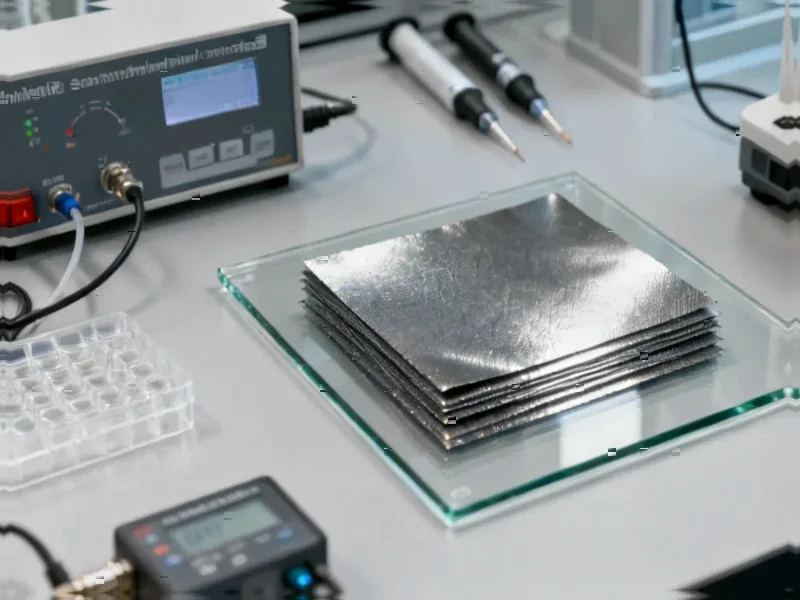According to Phys.org, chemists at the National University of Singapore have discovered that DNA phosphate groups can function as chiral catalysts for producing medicinal compounds, with research led by Assistant Professor Zhu Ru-Yi from the NUS Department of Chemistry. The team demonstrated that negatively charged phosphate groups in DNA can attract and guide positively charged reactants through “ion-pairing” effects, selectively producing specific mirror-image versions of compounds essential for pharmaceutical development. To identify which phosphates were responsible, researchers developed a novel “PS scanning” method that systematically replaced individual phosphates with look-alikes and monitored selectivity changes. The findings, validated through computer simulations with Professor Zhang Xinglong from The Chinese University of Hong Kong, were published in the journal Nature Catalysis on October 31, 2025. This breakthrough suggests DNA could enable more environmentally friendly production of complex pharmaceutical molecules.
The Chirality Challenge in Pharmaceutical Manufacturing
The significance of this discovery lies in addressing one of pharmaceutical chemistry’s most persistent challenges: enantioselective synthesis. Many drug molecules exist as chiral pairs, much like left and right hands, where one enantiomer provides therapeutic benefits while the other may be inactive or even cause adverse effects. The classic example is thalidomide, where one enantiomer provided the intended sedative effects while the other caused birth defects. Traditional methods for producing single-enantiomer drugs often require complex catalysts, expensive chiral separation techniques, or generate significant waste. What makes DNA phosphate catalysis particularly promising is its potential to bypass these energy-intensive processes through biomimetic principles that leverage natural molecular interactions.
The Technical Mechanism Behind Phosphate Catalysis
At the molecular level, this approach exploits the fundamental electrostatic properties of DNA’s phosphate backbone. Each phosphate group in the DNA chain carries a negative charge, creating what amounts to a precisely positioned array of catalytic sites. When these phosphates interact with positively charged reactants, they create temporary “ion pairs” that hold the reactants in specific orientations. This spatial control is crucial—it’s not merely about bringing reactants together but about positioning them in the exact geometry needed to favor formation of one enantiomer over the other. The researchers’ development of PS scanning represents a sophisticated approach to mapping these catalytic hotspots, essentially creating a functional blueprint of which specific phosphate positions are most critical for steering reactions toward desired outcomes.
Implementation Challenges and Scale-Up Considerations
While the laboratory results are promising, translating this technology to industrial pharmaceutical manufacturing presents several significant hurdles. DNA stability under industrial reaction conditions, particularly at elevated temperatures or in organic solvents, remains a concern. The cost of synthetic DNA on manufacturing scales could be prohibitive unless efficient recycling systems are developed. There’s also the question of reaction scope—while the researchers demonstrated effectiveness across several reaction types, pharmaceutical synthesis involves diverse chemical transformations that may not all be amenable to phosphate-based catalysis. Future development will likely focus on engineering modified DNA sequences with enhanced stability and catalytic efficiency, potentially through directed evolution approaches similar to those used for protein enzyme optimization.
Broader Implications for Green Chemistry
This research aligns with growing momentum toward sustainable chemical manufacturing. Traditional chiral catalysts often rely on precious metals like rhodium, palladium, or ruthenium, which are expensive, potentially toxic, and subject to supply chain vulnerabilities. DNA phosphate catalysis offers a metal-free alternative that leverages abundant, biodegradable materials. The environmental benefits extend beyond catalyst composition to potential reductions in energy consumption and waste generation throughout the pharmaceutical production pipeline. As noted in the published research, this approach could significantly advance green chemistry principles in an industry that has historically generated substantial chemical waste relative to product mass.
Future Research Directions and Commercial Potential
The most immediate application likely lies in producing high-value, complex pharmaceutical intermediates where traditional methods face limitations. The team’s planned exploration of additional chiral compound synthesis suggests they’re already working to expand the technology’s scope. Longer-term, we might see DNA phosphate catalysis integrated with other biocatalytic systems or even incorporated into continuous flow reactors for more efficient manufacturing. The modular nature of DNA also opens possibilities for creating custom catalytic arrays tailored to specific industrial needs. While commercial implementation is likely several years away, this research represents a fundamental shift in how we conceptualize biological molecules’ catalytic potential—demonstrating that functions evolution didn’t select for can be engineered to address human technological challenges.




